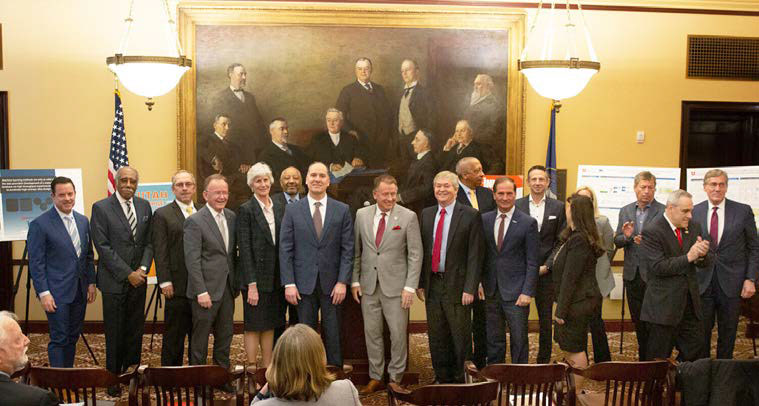Brice Wallace
The University of Utah and Idaho National Laboratory (INL) will partner on research and development projects that could advance the nation’s energy and security technology.
The two organizations recently signed a five-year agreement called Strategic Understanding for Premier Education and Research, or SUPER, that will expand opportunities for students, faculty and researchers to explore research collaborations. {mprestriction ids="1,3"}
The norm has been individual peer-to-peer agreements between laboratory researchers and university faculty members for the past decade. Those will be replaced with a broad institutional memorandum encouraging greater collaboration, including shared academic materials; visiting research scholars; and cooperative symposia, seminars, workshops and conferences.
“As a national laboratory supporting national priorities, we see significant value in regional partnerships to advance innovative science and technology,” said John Wagner, director of the INL Laboratory. “Partnerships with regional institutions like the University of Utah expand our reach and elevate our impact.”
The official memorandum of understanding is between the UofU and Battelle Energy Alliance, which manages INL for the U.S. Department of Energy’s Office of Nuclear Energy. INL is the nation’s center for nuclear energy research and development, and also performs research in each of the department’s strategic goal areas: energy, national security, science and the environment.
The agreement is nonbinding. Either organization may revoke it at any time, and there is no transfer of funding, proprietary information, or confidential data without further agreements.
During a news conference at the Utah Capitol announcing the agreement, University President Taylor Randall said the UofU engineering’s goal is to “drive new industry and new discovery” and “this type of agreement will drive the education of those new leaders of industry,” he said.
The agreement “is going to allow us to truly become a top 10 public university in research and engineering,” Taylor said. “This partnership will expand and also help the economy in numerous ways. You will see companies that are birthed from these technologies. You will see brand-new industries that will come from the types of ideas that come between the infusion from great research coming out of the National Lab and also industry that will participate.”
Richard B. Brown, dean of the UofU’s College of Engineering, said the agreement “will create another inflexion point in the growth of research at the University of Utah, especially as it leads to our ability to do classified research.”
Brown noted that the college has spun out 98 companies since 2006. “The U can play a role in helping INL commercialize the technologies that come out of our joint research efforts,” he said.
“I really feel it’s an auspicious day as it sets a new trajectory for our future,” added Derek Miller, president and CEO of the Salt Lake Chamber and Downtown Alliance. “Not only does this partnership have a positive implication for us in the near term, it will also build a cadre of talent that will lead us into a future that is important for our state and our economy.”
Utah’s innovation industries that are driving the state’s economic prosperity have research and development at their foundation, he said, “and this new partnership will, of course, strengthen that foundation.”
INL and the UofU’s College of Engineering have conducted collaborative research in several areas for the past decade: nuclear research, power grid security, wireless communications, geothermal energy, advanced materials and high-performance computing. In 2018, INL opened an office on the UofU campus focused on further developing a wireless technology that grew out of one of these collaborations to help first responders and law enforcement agencies communicate time-sensitive information, even when airwaves are congested.
More recently, the laboratory began collaborating with the school’s nuclear engineering faculty on a medical isotope project that could dramatically improve certain cancer treatments.{/mprestriction}








